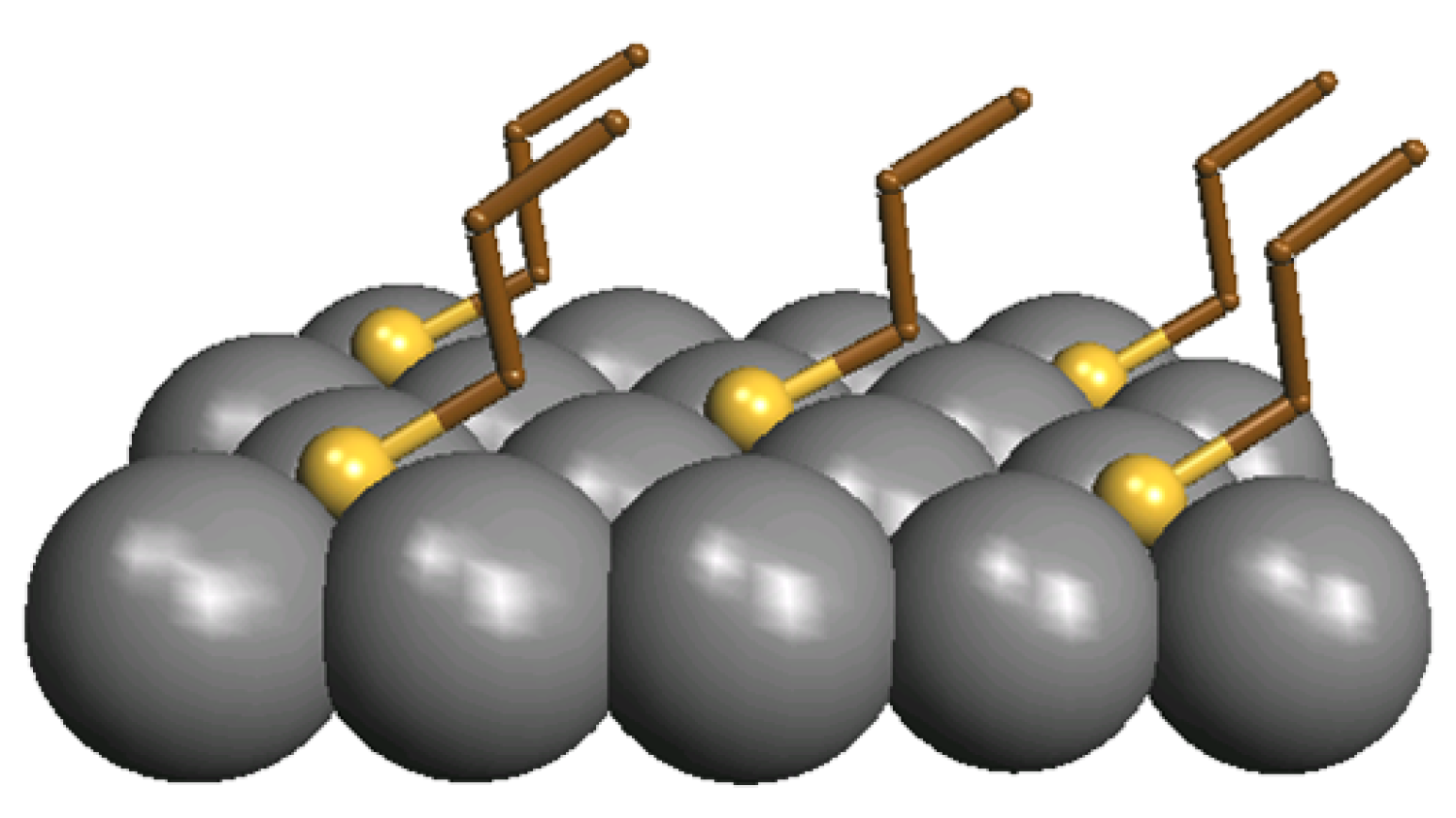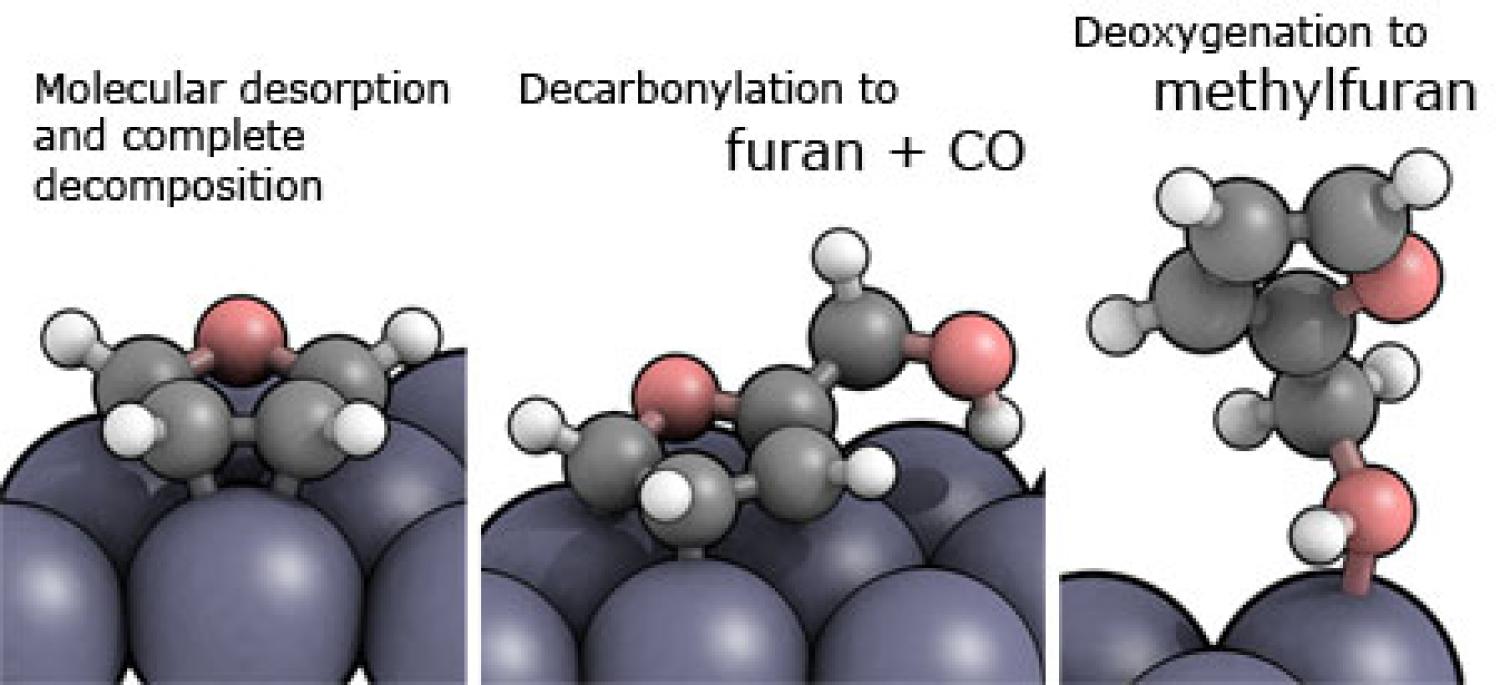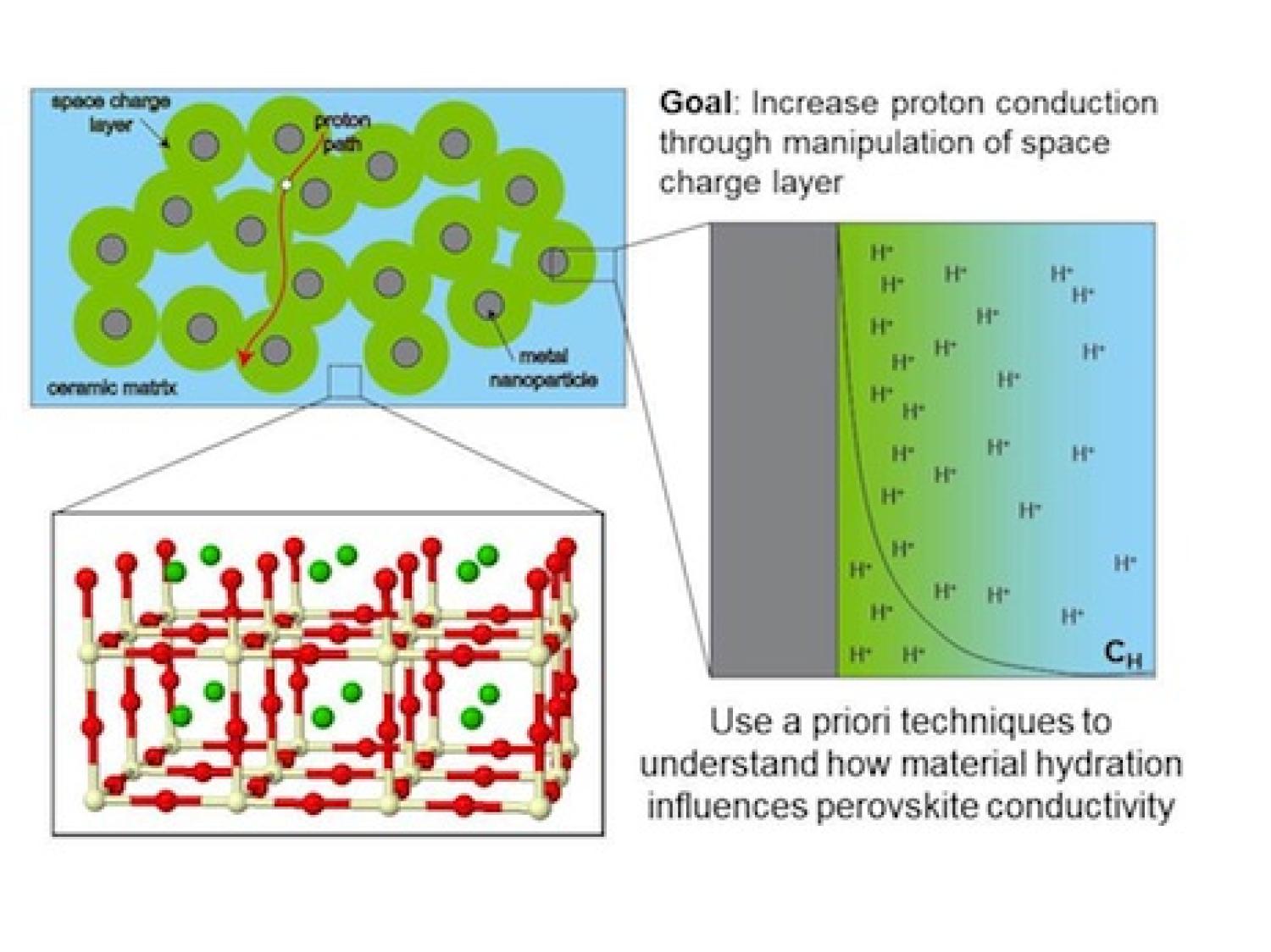Modifying catalysts for high selectivity
Economical production of fuels and chemicals from biomass requires precise control over the selectivity of reaction processes. The high functionality of biomass-derived compounds creates the possibility for many reactions to occur, and controlling those reactions is a key objective of our group. We employ a variety of catalyst design strategies to control selectivity, including the manipulation of the surface environment with inorganic modifiers. More recently, we have been collaborating with Professor Dan Schwartz's group to modify catalysts with organic monolayer films. In principle, these films allow particular functional groups to be attracted to or repelled from the metal surface, following a similar mechanism to that utilized by biological catalysts (enzymes). We have seen that modification of conventional metal catalysts with such films allows for dramatic improvements in selectivity for several reactions of multifunctional oxygenates.
Example publications:
- Schoenbaum, C.A.; Schwartz, D.K.; Medlin, J.W. Acc. Chem. Res., 2014, 47 (4), pp 1438–1445.
- Kahsar, K.R.; Schwartz, D.K.; and Medlin, J.W. J. Am. Chem. Soc., 2014, 136 (1), pp 520–526.
- Pang, S. H.; Schoenbaum, C.A.; Schwartz, D.K.; Medlin, J.W. Nat. Comm., 2013, 4 pp 92-99.
- Montemore, M.M.; Medlin, J.W. J. Phys. Chem. C, 2014, 118 (5), pp 2666–2672.
- Marshall, S.T.; O'Brien, M.; Oetter, B.; Corpuz, A.; Richards, R.M.; Schwartz, D.K.; Medlin, J.W. Nature Mat. 2010, 9, 853-858.
- Schaal, M.T.; Hyman, M.P.; Rangan, M.; Ma, S.; Williams, C.T.; Monnier, J.R.; Medlin, J.W. Surf. Sci. 2009, 603, 690-696.
Surface chemistry of highly functional oxygenates
Computer visualizations show the process for hydrodeoxygenation of furfuryl alcohol. The process includes molecular desorption and complete decomposition; decarbonylation to furan and CO; and deoxygenation to methylfuran.
In the conversion of biomass to chemicals and fuels, a polymer such as cellulose is typically deconstructed (hydrolyzed) into its component sugars, which can subsequently be processed into fuels and chemicals. Sugars and sugar derivatives are highly functional compounds; that is, they contain multiple functional groups that serve as positions on the molecule where a reaction can take place. One of the aims of our research is be able to predict and control how biomass-derived compounds will react over catalytic surfaces. In many cases, the presence of multiple functional groups on a single molecule has synergistic effects that cannot be understood based on the reactivity of the individual functional groups in isolation. Understanding reactivity of biomass-derived compounds on surfaces is a key step in the rational design of catalysts for biorefining processes.
Example publications:
- Williams, R.M. Medlin, J.W. Langmuir, 2014, 30 (16), pp 4642–4653.
- Griffin, M.B.; Pang, S.H.; Medlin, J.W. J. Phys. Chem. C 2012, 2012, 116 (6), pp 4201–4208.
- Pang, S.H.; Medlin, J.W. ACS Catal. 2011, 1, 1272-1283.
- Medlin, J.W. ACS Catal. 2011, 1, 1284-1297.
- Horiuchi, C.M.; Medlin, J.W. Langmuir 2010, 26, 13320-13332.
- Griffin, M.B.; Jorgensen, E.L.; Medlin, J.W. Surf. Sci. 2010, 604, 1558-1564.
Surface chemistry of electrocatalytic processes
Computer visualizations show proton conduction through a charge layer. The goal is to increase proton conduction through manipulation of space charge layers. In this example, researchers use apriori techniques to understand how material hydration influences perovskite conductivity.
Electrocatalytic reactions are important for a number of emerging technologies related to renewable energy. Our work explores how the presence of surface charge and an electrolyte affects chemical reactivity. For example, we are working with the
Renewable Energy Materials Research Science and Engineering Center to investigate how ionic conducting materials can be designed to serve as efficient fuel cell membranes. We are also studying the electrochemical reduction of carbon dioxide to hydrocarbons fuels. This process has been proposed as a source for renewable, environmentally-friendly fuels; however, the efficiency and selectivity need to be improved to make the process viable.
Example publications:
- Tauer, T.; O'Hayre, R.; Medlin, J.W. J. Mater. Chem. A, 2013, 1 pp 2840–2846.
- Tauer, T.; O'Hayre, R.; Medlin, J.W. Solid State Ionics 2011, 204, 27-34.
- Hyman, M.P.; Medlin, J.W. J. Phys. Chem. C 2007, 111, 17052-17060.




